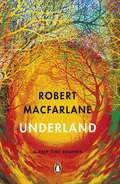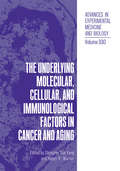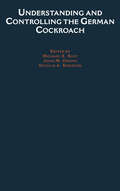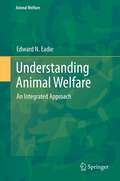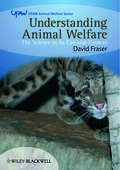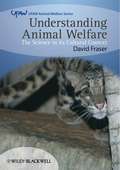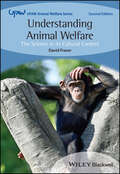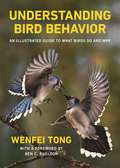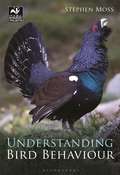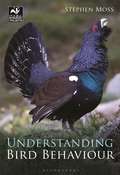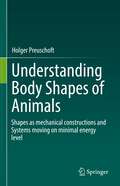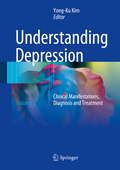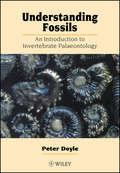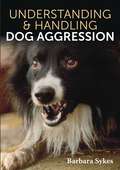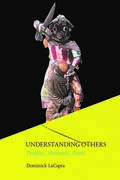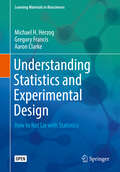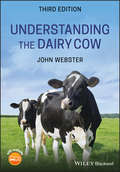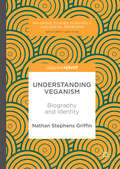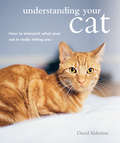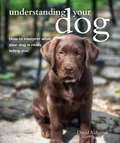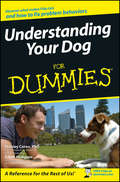- Table View
- List View
Underland: A Deep Time Journey
by Robert MacfarlaneThe unmissable new book from the bestselling, prize-winning author of Landmarks, The Old Ways and The Lost Words'You'd be crazy not to read this book' The Sunday Times'Underland is a magnificent feat of writing, travelling and thinking that feels genuinely frontier pushing, unsettling and exploratory' Evening Standard'Marvellous... Neverending curiosity, generosity of spirit, erudition, bravery and clarity... This is a book well worth reading' The Times'Extraordinary... at once learned and readable, thrilling and beautifully written' Observer'Attentive, thoughtful, finely honed... I turned the last page with the unusual conviction of having been in the company of a fine writer who is - who must surely be - a good man' TelegraphDiscover the hidden worlds beneath our feet...In Underland, Robert Macfarlane takes a dazzling journey into the concealed geographies of the ground beneath our feet - the hidden regions beneath the visible surfaces of the world. From the vast below-ground mycelial networks by which trees communicate, to the ice-blue depths of glacial moulins, and from North Yorkshire to the Lofoten Islands, he traces an uncharted, deep-time voyage. Underland a thrilling new chapter in Macfarlane's long-term exploration of the relations of landscape and the human heart.'He is the great nature writer, and nature poet, of this generation' Wall Street Journal 'Packed with stories based in geography, history, myth, gossip, legend, religion, geology and the natural world. Macfarlane's writing moves and enthrals' The Times on The Old Ways'Irradiated by a profound sense of wonder... Few books give such a sense of enchantment; it is a book to give to many, and to return to repeatedly' Independent on Landmarks
The Underlying Molecular, Cellular and Immunological Factors in Cancer and Aging (Advances in Experimental Medicine and Biology #330)
by Stringer Sue YangBackground Cancer is a variety of malignancies generally associated with aging. As the overall health technology and health care delivery improved with the advances made in medicine and science in the United States, the life expectancy of the population also increased. The average life expectancy in the U. S. A. has increased from 49 years at the end of 1900 to 75 years today in 1990 (1-3). The population of 65 years and older that constituted 25. 5 million or 11. 3% of the total U. S. population in 1980(4) has now increased to 31. 1 million or 12. 5% of the population according to the 1990(5) census. As cancer diagnosis and treatment have improved, cancer mortality among patients under 55 has been significantly reduced within recent years *1; however, cancer incidence under 55 is still increasing at about 0. 4% per year (as compared to 1. 0% for all ages or 0. 6% for < 65) according to the 1990 review of the 15 year trends in the Cancer Statistics Review 1973-1987, published by the Surveillance, Epidemiology, and End Results (SEER) Program of the National Cancer Institute (NCI). In contrast, both cancer incidence and mortality have been increasing among the population 65 and over*2 at a rate of 1. 4% and 1. 0% respectively per year between 1973-1987(6).
Understanding and Controlling the German Cockroach
by Michael K. Rust John M. Owens Donald A. ReiersonThe German cockroach is considered to be the most resilient and ecologically important insect pest found in homes, apartments, and commercial facilities in the United States and across the world. This book expertly provides up-to-the-minute information about the behavior and biology of this pest--including taxonomy, distribution, morphology, and genetics--as it may relate to effective technologies for its control. Building on information presented piecemeal in books and articles appearing over more than 50 years, the book features over 1,200 references related to the German cockroach, most published within the last year. With contributions from the top experts, the book will be invaluable to students and practitioners of entomology and pest management.
Understanding Animal Welfare: An Integrated Approach (Animal Welfare #13)
by Edward N. EadieThis book examines the contents, influence, and potential of a personal selection of modern books published over the last fifty years that have been relevant to improving welfare. The works selected comprise three earlier classics that mainly deal with animal experimentation and intensive farming, as well as five that concentrate on specific subject areas, namely history, science, applied ethics, politics and law, that are important to protecting the welfare of animals against suffering inflicted by humans. The books are arranged in the order of their publication date, and for each one a few related works are also mentioned or discussed. This collection provides a broad understanding of animal protection issues, and provides the necessary basis for an informed and comprehensive approach to improving the welfare of animals. The books selected have been influential and they have the potential to improve animal welfare in the future.
Understanding Animal Welfare: The Science in its Cultural Context (UFAW Animal Welfare)
by David Fraser"This is a delightful book, full of interesting aspects of animal welfare. An excellent guide to the academic study of animal welfare science."—Marian Stamp Dawkins, Department of Zoology, University of Oxford Understanding Animal Welfare: The Science in its Cultural Context takes a completely fresh and thought-provoking approach. It is essential reading for anyone interested, studying or currently working in the fascinating field of animal welfare science. David Fraser places modern-day welfare issues within their historical framework by tracing the evolving ideas that led to current thinking. He also highlights some intriguing issues relating to the contradiction inherent in the term 'animal welfare science' and the practical problem of how to assess emotional states in animals. Special features: Encompasses ideas from a variety of disciplines to give a broad perspective of the topic. Discusses methods of measuring animal welfare and their strengths and limitations. Examines contemporary debates and applications of the science to policy issues. "... an impressive historical narrative of the genesis and growth of animal welfare as a scientific discipline.... The book will be invaluable for anyone involved with animal welfare issues on an academic level or those involved with the integration of these principles into current care and handling issues facing agriculture, companion, laboratory, wild, or zoo animals."—Carolyn L. Stull, PhD, Veterinary Medicine Extension, School of Veterinary Medicine, University of California, Davis "Fraser offers insights only possible from someone with his considerable experience and understanding."—Dr. Chris Sherwin, Department of Clinical Veterinary Science, University of Bristol This book is part of the UFAW/Wiley-Blackwell Animal Welfare Book Series. This major series of books produced in collaboration between UFAW (The Universities Federation for Animal Welfare), and Wiley-Blackwell provides an authoritative source of information on worldwide developments, current thinking and best practice in the field of animal welfare science and technology. For details of all of the titles in the series see www.wiley.com/go/ufaw.
Understanding Animal Welfare: The Science in its Cultural Context
by David Fraser"This is a delightful book, full of interesting aspects of animal welfare. An excellent guide to the academic study of animal welfare science."—Marian Stamp Dawkins, Department of Zoology, University of Oxford Understanding Animal Welfare: The Science in its Cultural Context takes a completely fresh and thought-provoking approach. It is essential reading for anyone interested, studying or currently working in the fascinating field of animal welfare science. David Fraser places modern-day welfare issues within their historical framework by tracing the evolving ideas that led to current thinking. He also highlights some intriguing issues relating to the contradiction inherent in the term 'animal welfare science' and the practical problem of how to assess emotional states in animals. Special features: Encompasses ideas from a variety of disciplines to give a broad perspective of the topic. Discusses methods of measuring animal welfare and their strengths and limitations. Examines contemporary debates and applications of the science to policy issues. "... an impressive historical narrative of the genesis and growth of animal welfare as a scientific discipline.... The book will be invaluable for anyone involved with animal welfare issues on an academic level or those involved with the integration of these principles into current care and handling issues facing agriculture, companion, laboratory, wild, or zoo animals."—Carolyn L. Stull, PhD, Veterinary Medicine Extension, School of Veterinary Medicine, University of California, Davis "Fraser offers insights only possible from someone with his considerable experience and understanding."—Dr. Chris Sherwin, Department of Clinical Veterinary Science, University of Bristol This book is part of the UFAW/Wiley-Blackwell Animal Welfare Book Series. This major series of books produced in collaboration between UFAW (The Universities Federation for Animal Welfare), and Wiley-Blackwell provides an authoritative source of information on worldwide developments, current thinking and best practice in the field of animal welfare science and technology. For details of all of the titles in the series see www.wiley.com/go/ufaw.
Understanding Animal Welfare: The Science in its Cultural Context (UFAW Animal Welfare)
by David FraserUnderstanding Animal Welfare The essential text on understanding and improving animal welfare Understanding Animal Welfare, 2nd Edition is revised and expanded to incorporate new research and developments in animal welfare. Updated with greater accessibility in mind, the reader is guided through animal welfare in its cultural and historical context, methods of study, and applications in practice and policy. Drawing examples from farm, companion, laboratory and zoo animals, the text provides an up-to-date overview of research and its applications, while also tracing how concepts and methods have evolved over time. Readers of the second edition of Understanding Animal Welfare will also find: New developments in understanding positive animal states The importance of human actions in determining animal welfare New content on “One Welfare” How free-living wild animals are affected by human technology and climate change Originally intended for scientists and professionals, Understanding Animal Welfare has also found a home in undergraduate classrooms. It is now the essential text for students, practitioners, veterinarians, and researchers in animal welfare and related fields.
Understanding Animal Welfare: The Science in its Cultural Context (UFAW Animal Welfare)
by David FraserUnderstanding Animal Welfare The essential text on understanding and improving animal welfare Understanding Animal Welfare, 2nd Edition is revised and expanded to incorporate new research and developments in animal welfare. Updated with greater accessibility in mind, the reader is guided through animal welfare in its cultural and historical context, methods of study, and applications in practice and policy. Drawing examples from farm, companion, laboratory and zoo animals, the text provides an up-to-date overview of research and its applications, while also tracing how concepts and methods have evolved over time. Readers of the second edition of Understanding Animal Welfare will also find: New developments in understanding positive animal states The importance of human actions in determining animal welfare New content on “One Welfare” How free-living wild animals are affected by human technology and climate change Originally intended for scientists and professionals, Understanding Animal Welfare has also found a home in undergraduate classrooms. It is now the essential text for students, practitioners, veterinarians, and researchers in animal welfare and related fields.
Understanding Bird Behavior: An Illustrated Guide to What Birds Do and Why
by Wenfei TongA vivid, eye-opening view of why birds behave the way they do Birds are intelligent, sociable creatures that exhibit a wide array of behaviors—from mobbing and mimicking to mating and joint nesting. Why do they behave as they do? Bringing to light the remarkable actions of birds through examples from species around the world, Understanding Bird Behavior presents engaging vignettes about the private lives of birds, all explained in an evolutionary context.We discover how birds find food, relying on foraging techniques, tools, and thievery. We learn about the courtship rituals through which birds choose, compete for, woo, and win mates; the familial conflicts that crop up among parents, offspring, and siblings; and the stresses and strains of nesting, including territory defense, nepotism, and relationship sabotage. We see how birds respond to threats and danger—through such unique practices as murmurations, specific alarm calls, distraction displays, and antipredator nest design. We also read about how birds change certain behaviors—preening, migration, breeding, and huddling—based on climate. Richly illustrated, this book explores the increasing focus on how individual birds differ in personality and how big data and citizen scientists are helping to add to what we know about them.Drawing on classic examples and the latest research, Understanding Bird Behavior offers a close-up look at the many ways birds conduct themselves in the wild.Compelling insights into bird behaviorClassic examples and the latest research, including work by citizen scientistsFascinating vignettes about the private lives of birds, from finding food and family life, to coping with climate and other threats150 detailed color illustrations and photographs
Understanding Bird Behaviour
by Stephen MossThe way birds behave is one of the vital keys to accurate identification and this book provides the experienced instruction needed to understand and get the most out of watching birds. The guide covers all the fundamental types of bird behaviour, including movement, feeding, breeding, migration, navigation, distribution, range, life and death, all of which are illustrated with beautiful photographs. There is a whole section dedicated to the behaviour of different species groups, from divers and grebes through to sparrows, buntings and finches.
Understanding Bird Behaviour
by Stephen MossThe way birds behave is one of the vital keys to accurate identification and this book provides the experienced instruction needed to understand and get the most out of watching birds. The guide covers all the fundamental types of bird behaviour, including movement, feeding, breeding, migration, navigation, distribution, range, life and death, all of which are illustrated with beautiful photographs. There is a whole section dedicated to the behaviour of different species groups, from divers and grebes through to sparrows, buntings and finches.
Understanding Body Shapes of Animals: Shapes as mechanical constructions and Systems moving on minimal energy level
by Holger PreuschoftThis book discusses how and why animals evolved into particular shapes. The book identifies the physical laws which decide over the evolutionary (selective) value of body shape and morphological characters. Comparing the mechanical necessities with morphological details, the author attempts to understand how evolution works, and which sorts of limitations are set by selection.The book explains morphological traits in more biomechanical detail without getting lost in physics, or in methods. Most emphasis is placed on the proximate question, namely the identification of the mechanical stresses which must be sustained by the respective body parts, when they move the body or its parts against resistance.In the first part of the book the focus is on ‘primitive’ animals and later on the emphasis shifts to highly specialized mammals. Readers will learn more about living and fossil animals.A section of the book is dedicated to human evolution but not to produce another evolutionary tree, nor to refine a former one, but to contribute to answering the question: “WHY early humans have developed their particular body shape".
Understanding Depression: Volume 2. Clinical Manifestations, Diagnosis and Treatment
by Yong-Ku KimThis book, in two volumes, focuses on contemporary issues and dilemmas in relation to depression. The aim is to equip readers with an up-to-date understanding of the clinical and neurobiological underpinnings of depression, the clinical manifestations, and the development of more effective treatments. This second volume is devoted specifically to clinical and management issues. Readers will find detailed information on a wide range of frequently encountered and more complicated clinical presentations, with examination of risk factors and links to other conditions. Diagnostic aspects, including progress toward biological classification and the role of neuroimaging, are explored. Current trends in therapy are examined at length, drawing on the latest evidence and covering not only antidepressant medications but also the roles of neurostimulation, combined pharmacotherapy and psychotherapy, mindfulness-based cognitive therapy, and complementary and alternative medicine. The companion volume is dedicated to the underlying biomedical and neurobiological basis of depression. Understanding Depression will be an excellent source of information for both researchers and practitioners in the field.
Understanding Fossils: An Introduction to Invertebrate Palaeontology
by Peter DoyleThe first introductory palaeontology text which demonstrates the importance of selected fossil groups in geological and biological studies, particularly in understanding evolutionary patterns, palaeoenvironmental analysis, and stratigraphy. Part one explores several key concepts, such as the processes of fossil preservation, the determination of evolutionary patterns, and use of fossils and statigraphical tools. Part two introduces the main fossil groups of value in these applied fields. Part three concentrates on the examination of important case histories which demonstrate the use of fossils in diverse practical examples. Evolutionary studies, palaeoenvironmental analysis, and stratigraphical applications are documented using up-to-date examples supported by overviews of the principles.
Understanding & Handling Dog Aggression
by Barbara SykesAn aggressive dog, whether large of small, baring its teeth and growling can be a terrifying sight. Dogs, like children, require boundaries and training in order for them to grow into sociable, well-mannered adults with a healthy respect for their fellow beings. Barbara Sykes explains how to recognise and understand the causes of hostility in dogs, and how to move forward in a calm and sympathetic way in order to gain a dog's respect and friendship. The author is an experienced dog trainer and her common-sense approach to behavioural problems in dogs is successfully proven in this book by the rehabilitation of Craig.
Understanding Others: Peoples, Animals, Pasts
by Dominick LaCapraTo what extent do we and can we understand others—other peoples, species, times, and places? What is the role of others within ourselves, epitomized in the notion of unconscious forces? Can we come to terms with our internalized others in ways that foster mutual understanding and counteract the tendency to scapegoat, project, victimize, and indulge in prejudicial and narcissistic impulses? How do various fields or disciplines address or avoid such questions? And have these questions become particularly pressing and not in the least confined to other peoples, times, and places? Making selective and critical use of the thought of such important figures as Sigmund Freud, Jacques Derrida, and Mikhail Bakhtin, in Understanding Others Dominick LaCapra investigates a series of crucial topics from the current state of deconstruction, trauma studies, and the humanities to newer fields such as animal studies and posthumanist scholarship. LaCapra adroitly brings critical historical thought into a provocative engagement with politics and our current political climate. This is LaCapra at his best, critically rethinking major currents and exploring the old and the new in combination, often suggesting what this means in the age of Trump.
Understanding Statistics and Experimental Design: How to Not Lie with Statistics (Learning Materials in Biosciences)
by Michael H. Herzog Gregory Francis Aaron ClarkeThis open access textbook provides the background needed to correctly use, interpret and understand statistics and statistical data in diverse settings. Part I makes key concepts in statistics readily clear. Parts I and II give an overview of the most common tests (t-test, ANOVA, correlations) and work out their statistical principles. Part III provides insight into meta-statistics (statistics of statistics) and demonstrates why experiments often do not replicate. Finally, the textbook shows how complex statistics can be avoided by using clever experimental design. Both non-scientists and students in Biology, Biomedicine and Engineering will benefit from the book by learning the statistical basis of scientific claims and by discovering ways to evaluate the quality of scientific reports in academic journals and news outlets.
Understanding the Dairy Cow
by John WebsterA comprehensive and thoroughly revised text on dairy science that contains information on the most recent developments The fully updated third edition of Understanding the Dairy Cow explores the scientific principles that provide a foundation for understanding the animal’s body system. The comprehensive text also reveals how to properly manage dairy cattle with economic efficiency whilst taking into consideration the cow’s welfare. The revised new edition contains expanded coverage on topics including insight into cow behaviour and welfare, genetic selection indices, new strategies for control of mastitis and lameness and information on the overworked cow. It also contains the most recent developments in breeding, nutrition and management. Is an authoritative text on the dairy cow that covers a wide-ranging subject area including the science, disease and husbandry Presents the information and knowledge necessary for the efficient and humane management of cows Includes expanded coverage on a variety of topics such as cow behaviour and welfare, and genetic selection indices Highlights major new developments in the field Covering both the basics and recent developments in dairy science, Understanding the Dairy Cow 3rd Edition is ideal for students in agriculture and veterinary science and for professionals working in the complex business of dairy farming.
Understanding the Dairy Cow
by John WebsterA comprehensive and thoroughly revised text on dairy science that contains information on the most recent developments The fully updated third edition of Understanding the Dairy Cow explores the scientific principles that provide a foundation for understanding the animal’s body system. The comprehensive text also reveals how to properly manage dairy cattle with economic efficiency whilst taking into consideration the cow’s welfare. The revised new edition contains expanded coverage on topics including insight into cow behaviour and welfare, genetic selection indices, new strategies for control of mastitis and lameness and information on the overworked cow. It also contains the most recent developments in breeding, nutrition and management. Is an authoritative text on the dairy cow that covers a wide-ranging subject area including the science, disease and husbandry Presents the information and knowledge necessary for the efficient and humane management of cows Includes expanded coverage on a variety of topics such as cow behaviour and welfare, and genetic selection indices Highlights major new developments in the field Covering both the basics and recent developments in dairy science, Understanding the Dairy Cow 3rd Edition is ideal for students in agriculture and veterinary science and for professionals working in the complex business of dairy farming.
Understanding Veganism: Biography and Identity
by Nathan Stephens GriffinThis book focuses on the increasingly popular phenomenon of veganism, a way of living that attempts to exclude all animal products on ethical grounds. Using data from biographical interviews with vegans, the author untangles the complex topic of veganism to understand vegan identity from a critical and biographical perspective. Shaped by the participants’ biographical narratives, the study considers the diverse topics of family, faith, sexuality, gender, music, culture, embodiment and activism and how these influence the lives and identities of vegans. It also highlights the hostility vegans face, and how this hostility functions in the everyday, and intersects with other aspects of their identity and biography, exemplified through ‘coming out’ and ‘queer’ narratives of veganism. Understanding Veganism will be of particular interest to those engaged in the fields of biographical research, critical animal studies or more broadly with an interest in animal advocacy.
Understanding Veganism: Biography and Identity
by Nathan Stephens GriffinThis book focuses on the increasingly popular phenomenon of veganism, a way of living that attempts to exclude all animal products on ethical grounds. Using data from biographical interviews with vegans, the author untangles the complex topic of veganism to understand vegan identity from a critical and biographical perspective. Shaped by the participants’ biographical narratives, the study considers the diverse topics of family, faith, sexuality, gender, music, culture, embodiment and activism and how these influence the lives and identities of vegans. It also highlights the hostility vegans face, and how this hostility functions in the everyday, and intersects with other aspects of their identity and biography, exemplified through ‘coming out’ and ‘queer’ narratives of veganism. Understanding Veganism will be of particular interest to those engaged in the fields of biographical research, critical animal studies or more broadly with an interest in animal advocacy.
Understanding Your Cat: How to interpret what your cat is really telling you
by David AldertonUnderstanding Your Cat will teach you everything you need to know about how to communicate with your cat!
Understanding Your Dog: How to interpret what your dog is really telling you
by David AldertonUnderstanding Your Dog will teach you everything you need to know about how to communicate with your dog!
Understanding Your Dog For Dummies (For Dummies)
by Stanley Coren Sarah HodgsonIf you’re feeling overwhelmed by the prospect of getting a dog or nervous about caring for the one you’ve already brought home, now you can relax. Understanding Your Dog for Dummies helps you recognize not only why your dog behaves the way she does, but in a way that enables you to parlay that into a well-behaved companion who listens (and sits, and speaks, and comes, etc.). Whether your pooch is a mixed breed or purebred, she has a distinct identity that makes her unique. The first step in understanding your dog is to respect the honorable task she was originally bred for and to identify how these inbred impulses influence her personality and behavior. In essence, you need to speak her language if you expect her to learn to understand yours. Understanding Your Dog for Dummies gives you everything you need to learn to understand your pooch’s unique dialect of “Doglish”—and shows you how to take on the role as pack leader to give your dog the cues, guidance, and consistency she needs to shape and develop good behaviors. Inside you’ll discover how to: Read your dog’s body language Communicate with your dog Interpret your dog’s breed-specific traits Correct dog-behavior-gone-bad Counter anxiety-based behavior Understand and resolve aggressive behavior And so much more! Think of this book as Doglish 101—a prerequisite for every human member of your dog’s family. Now, let the training begin!
Understanding Your Dog For Dummies
by Stanley Coren Sarah HodgsonIf you’re feeling overwhelmed by the prospect of getting a dog or nervous about caring for the one you’ve already brought home, now you can relax. Understanding Your Dog for Dummies helps you recognize not only why your dog behaves the way she does, but in a way that enables you to parlay that into a well-behaved companion who listens (and sits, and speaks, and comes, etc.). Whether your pooch is a mixed breed or purebred, she has a distinct identity that makes her unique. The first step in understanding your dog is to respect the honorable task she was originally bred for and to identify how these inbred impulses influence her personality and behavior. In essence, you need to speak her language if you expect her to learn to understand yours. Understanding Your Dog for Dummies gives you everything you need to learn to understand your pooch’s unique dialect of “Doglish”—and shows you how to take on the role as pack leader to give your dog the cues, guidance, and consistency she needs to shape and develop good behaviors. Inside you’ll discover how to: Read your dog’s body language Communicate with your dog Interpret your dog’s breed-specific traits Correct dog-behavior-gone-bad Counter anxiety-based behavior Understand and resolve aggressive behavior And so much more! Think of this book as Doglish 101—a prerequisite for every human member of your dog’s family. Now, let the training begin!
